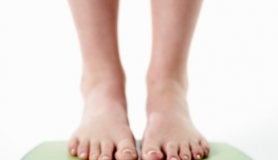During foul weather this took more effort than just turning the tap on and I came to dread the familiar sound of the tank nearing empty. Plus filling the tank too much caused the boat to keel slightly, so we tended to underfill it. Thus began our water saving adventures. Several years on, and I am still very conscious of how much water we use. Despite moving to a house with running water I didn’t want to lose that sense of what a precious commodity water actually is and just how much of it we waste in our everyday lives, so some of the practises we developed during our boat-dwelling days live on.
Water is one of the world’s most vital and precious commodities but it is easy to forget that in our lives of convenience. How often when running the tap to brush our teeth do we stop and ponder the 780 million people worldwide who live without access to clean water? Or when flushing the toilet for the umpteenth time that day, how often do we think of the 3.4 million people who die of a water related disease every year? The average person in the UK uses 150 litres of water a day (to visualise that, it helps to remember that a large bottle of water is just 2 litres). By 2020, our demand for water could increase by 800 million extra litres of water a day. We can all do our bit to conserve water and minimise our impact.
Here are five simple ways to conserve water in your daily life and make a difference:
1. If it’s yellow let it mellow
There are 45 million toilets in UK homes, using an estimated 2 billion litres of fresh water every day, accounting for 30% of the total water used in a household. Many are old fashioned style flush toilets which use an average of 13 litres per flush. Modern toilets are fitted with low flush options: 6 litres are used for the full flush and 4 litres for the reduced flush. So getting a modern flush system toilet is a good option but might be expensive if you’re not planning on a bathroom refit. If you have an older toilet, contact your local water company to get a free cistern displacement unit (CDD) which limits the amount of water used in each flush (much like putting a brick in the cistern, they take up room that would normally be filled with water). They are incredibly easy to install and will quickly make a difference. And don’t flush every time you have a quick wee. Encourage all the family to use minimal toilet paper and flush only when absolutely necessary. Some people get very het up about cleanliness with unflushed toilets, but a simple solution of vinegar and tea tree and/or lavender essential oil combined with water in a spray bottle refreshes and cleanses the toilet as needed and negates smell. When the toilet needs a good scrub, use bicarbonate of soda, a toilet brush and a bit of elbow grease!
2. Get that tap fixed
However irritating the noise of a dripping tap is, the environmental implications are worse. A dripping tap can waste up to 15 litres of clean water a day which, when you consider that so many people live without, makes for a pretty depressing statistic. Fitting a new washer should be right up there on a to-do list for even the most reluctant DIY-er. If the thought fills you with dread, ask a neighbour or friend if they can help you or trade skills with them. Or check out an online instruction video – there are plenty. A new washer is very cheap from most DIY stores and many will be able to offer advice on fitting it.
3. Spend less time in the shower
Power showers are on the rise and with them our water consumption. A power shower uses as much, if not more, water than a bath. There are ways of getting the power shower experience without the water usage, including purchasing a shower head that offers aerated showers which maintains the power shower feeling by mixing air in with water. Other simpler measures include taking a basic egg timer into the shower with you and limiting your time under the water. In Australia, a campaign which arose out of extreme drought saw people aiming to spend 4 minutes showering and a dramatic decrease in water consumption as a result. Another measure is to turn the water off when you’re ‘soaping up’ or putting shampoo/conditioner in your hair, turning the shower back on again to rinse. Or try cold showers: they have many health benefits but you can rest assured you don’t want to linger too long under a cold jet of water! If you’re practically-minded, it is well worth implementing a system of grey water usage, whereby water from showers and baths is used in the garden. Another thing worth thinking about is how important it is to you to take a shower every day. Whilst in our cleanliness-obsessed modern world, people are frowned upon if they even suggest that this might be an option, having a shower every other day is unlikely to make you smell like Stig of the Dump. Get a flannel and have a quick wash instead; you freshen up with a fraction of the water.
4. Give the washing machine a break
One of the best pieces of advice another mum gave me when I became a mum is that it doesn’t matter if your kid wears dirty clothes. Seriously. Because, let’s face it, within hours of you putting on that squeaky clean vest it’s likely to be covered in food/mud/paint. We don’t have a washing machine at home and, whilst at times it’s frustrating, it has also helped us become more resourceful. The same mum gave me several tunic-style garments for my son, commonly worn as outerwear for kids in the Far East. Sling one of these over your child’s clothes when they’re eating or playing outside and you protect their clothes and hugely minimise the amount of washing you need to do at the end of the day. It has helped us to only visit the launderette once a week (whilst my toddler does seem entranced by the tumbling clothes in the machine there’s a limit to how many hours of my week I want to spend in a launderette) and that means we are conscious about what needs washing and what probably doesn’t. Clothes that smell of cooking can be quickly aired on the line on a breezy day; stains and spillages can be scrubbed away from the garment as they happen, and it is okay (hooray hooray!) for your child to amble around in slightly mucky clothes despite what the detergent ads tell you. Crisp clean whites does not a better mother make! In my early twenties I was a bit obsessed with clean clothes and admit that if I’d only worn an item once it felt ‘dirty’. As the years have gone on, it has been a liberation to step away from the idea that humans must be scrubbed and polished and preened into a big synthetic-smelling homogeny and that it is okay to live as though there are more important things than washing. It’s worth mentioning that make sure you have a full load every time you use your washing machine and opt for the eco settings such as Quick Wash and lowest temperatures. When buying a new washing machine, always opt for the most energy-efficient model you can afford.
5. Use your butt
Installing a water butt in your garden is one of the most quick and easy ways to use the water that pours out of the sky – for free! An amazing 100,000 litres of rainwater falls on the average house each year and most of it pours away down the drain. Water butts are easy to find at a garden centre or DIY shop, or you might be able to pick a second-hand one up for free. Connect them up with a downpipe from your guttering and you quickly have a resourceful way to keep your garden watered whatever the weather. Water your garden during the coolest part of the day to avoid evaporation. Your garden will benefit from any household grey water (used water), so this is one way to have a thriving vegetable and flower garden without recourse to the tap. When washing your hands, running the tap to get hot water, or rinsing fruit and vegetables, collect the water and use it to water your houseplants or garden. Use mulch such as bark or newspaper in your garden to prevent soil from drying out. Practise permaculture and avoid stressing and drying the soil with excessive digging.
These are just the tip of the iceberg when it comes to conserving water and once you get hooked on water conservation you’ll constantly be looking for ways to reduce your consumption. It can help to have a water metre fitted and set your family the task of reducing water usage – everyone loves a good challenge if they can chart the results! To find out more about how you can conserve water there are many excellent websites, books and resources. Check out the Waterwise website for tips, or the ideas for kids at The Water Page including links to games and activities.







